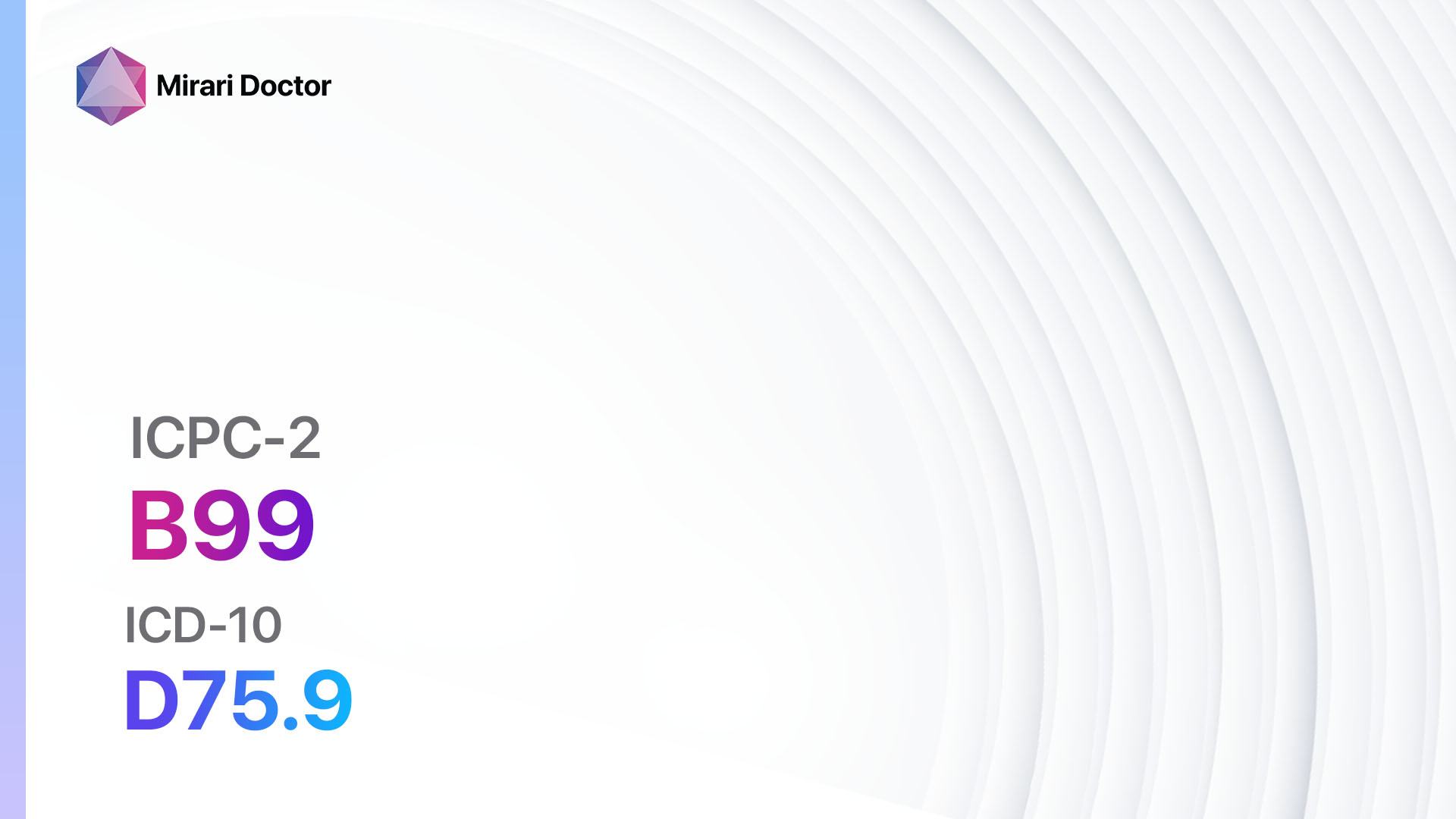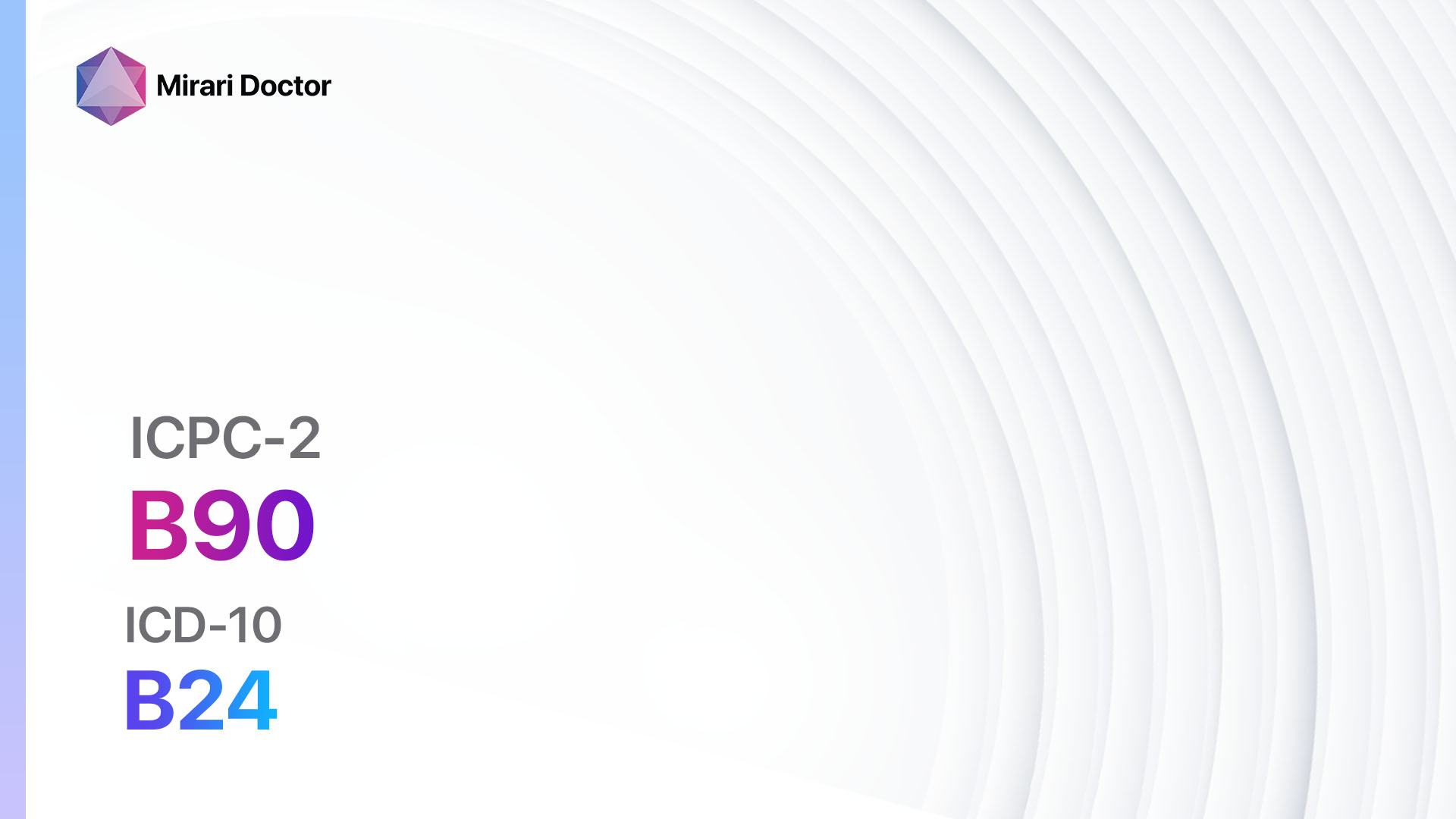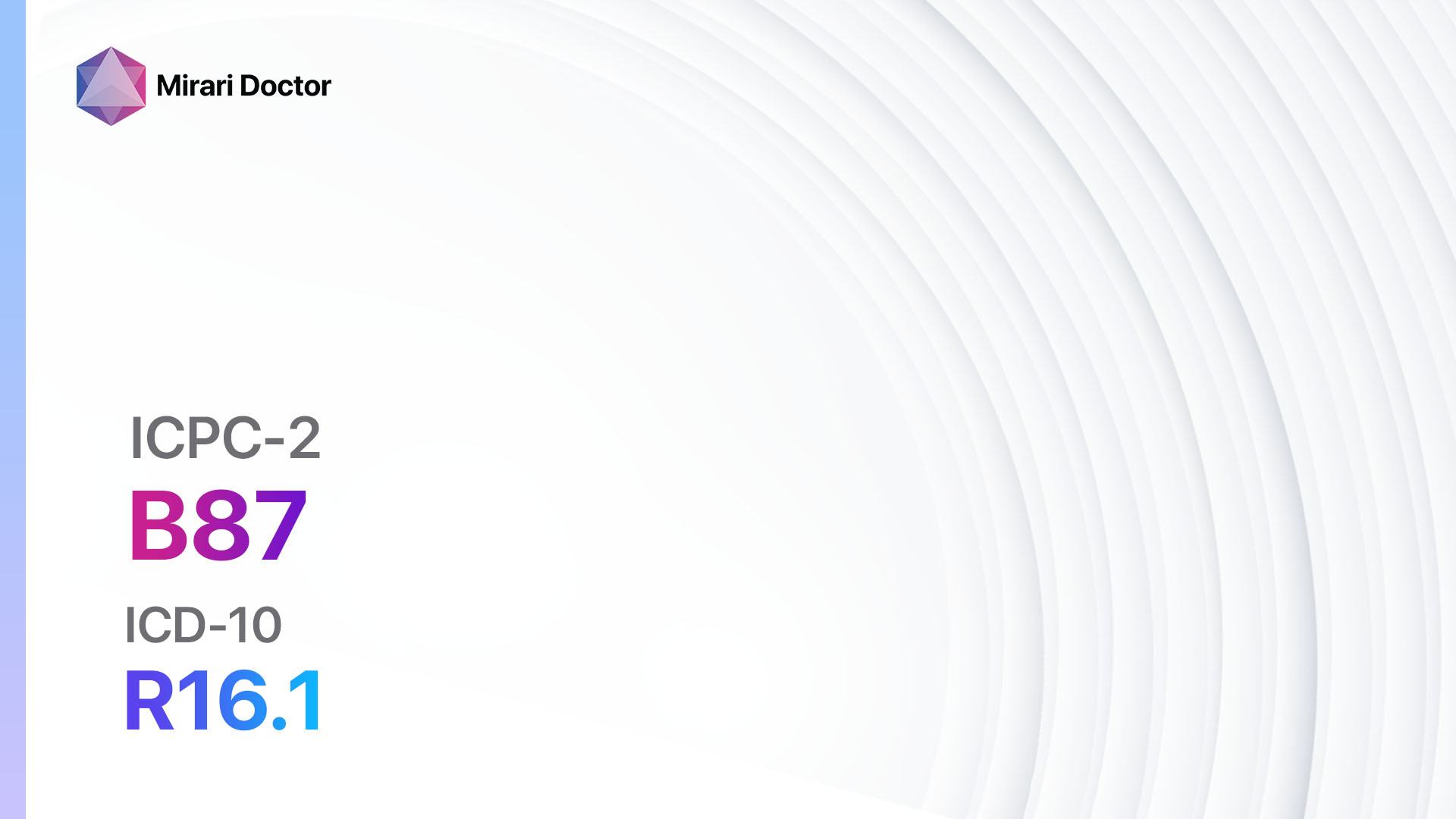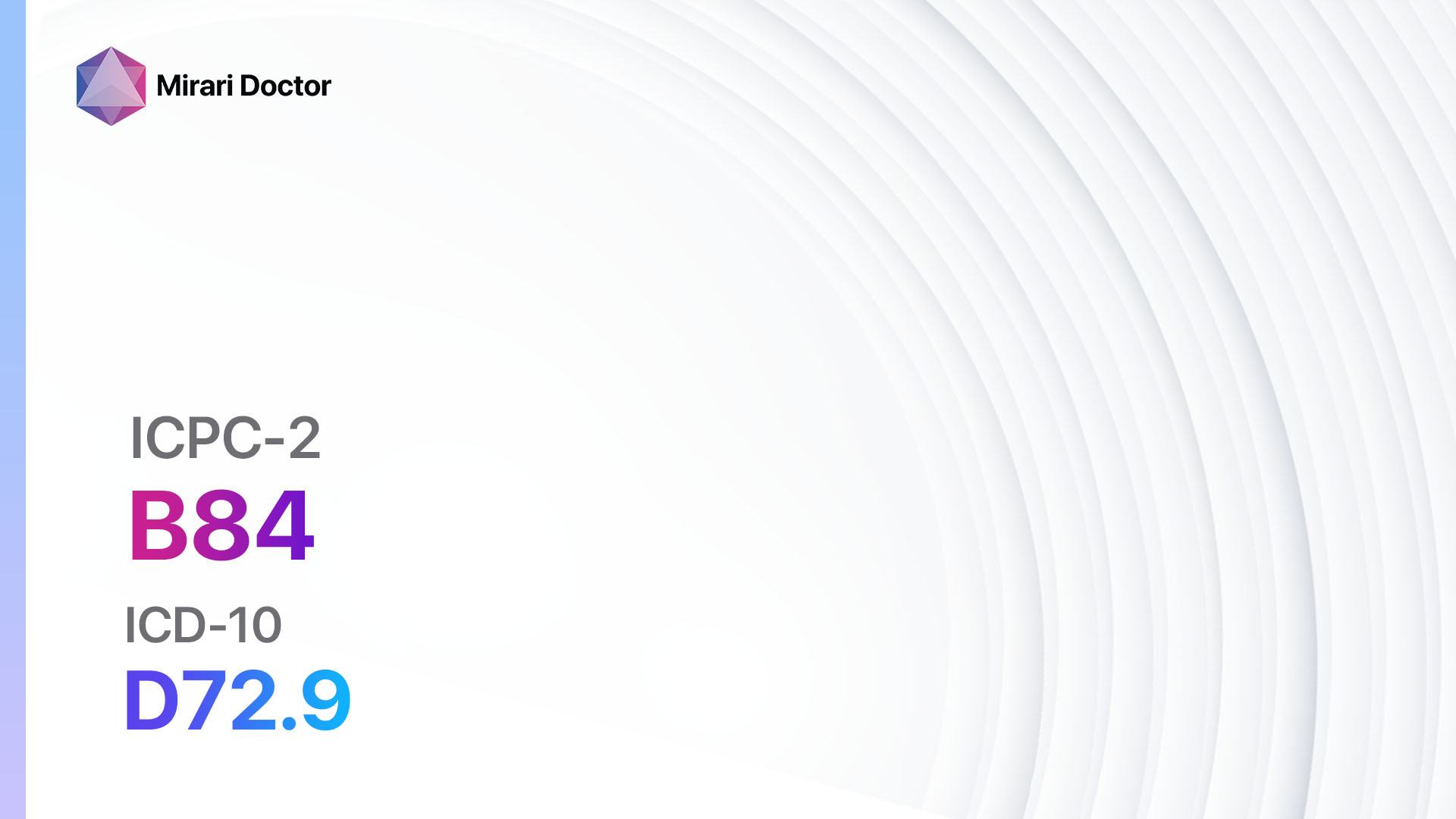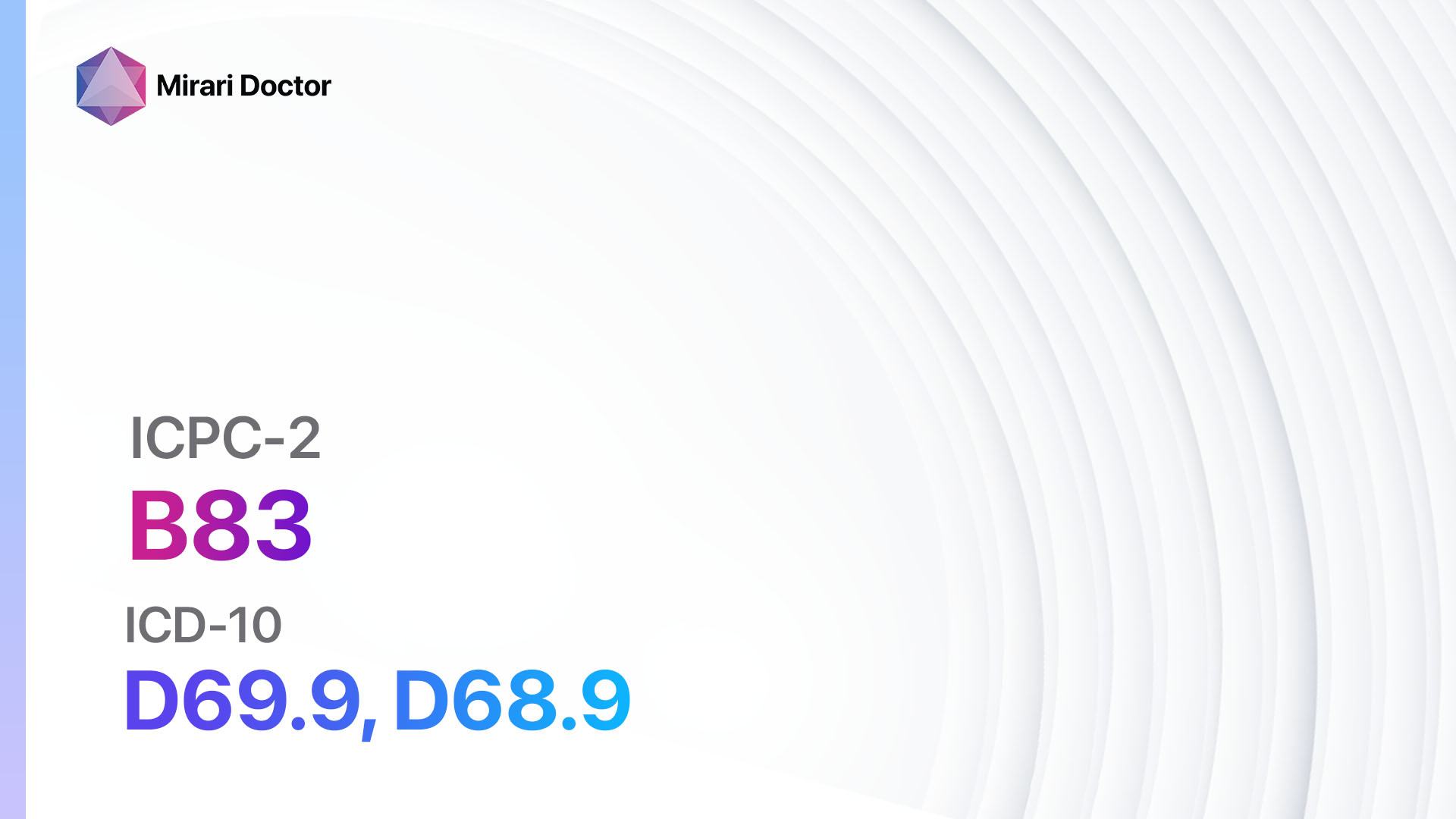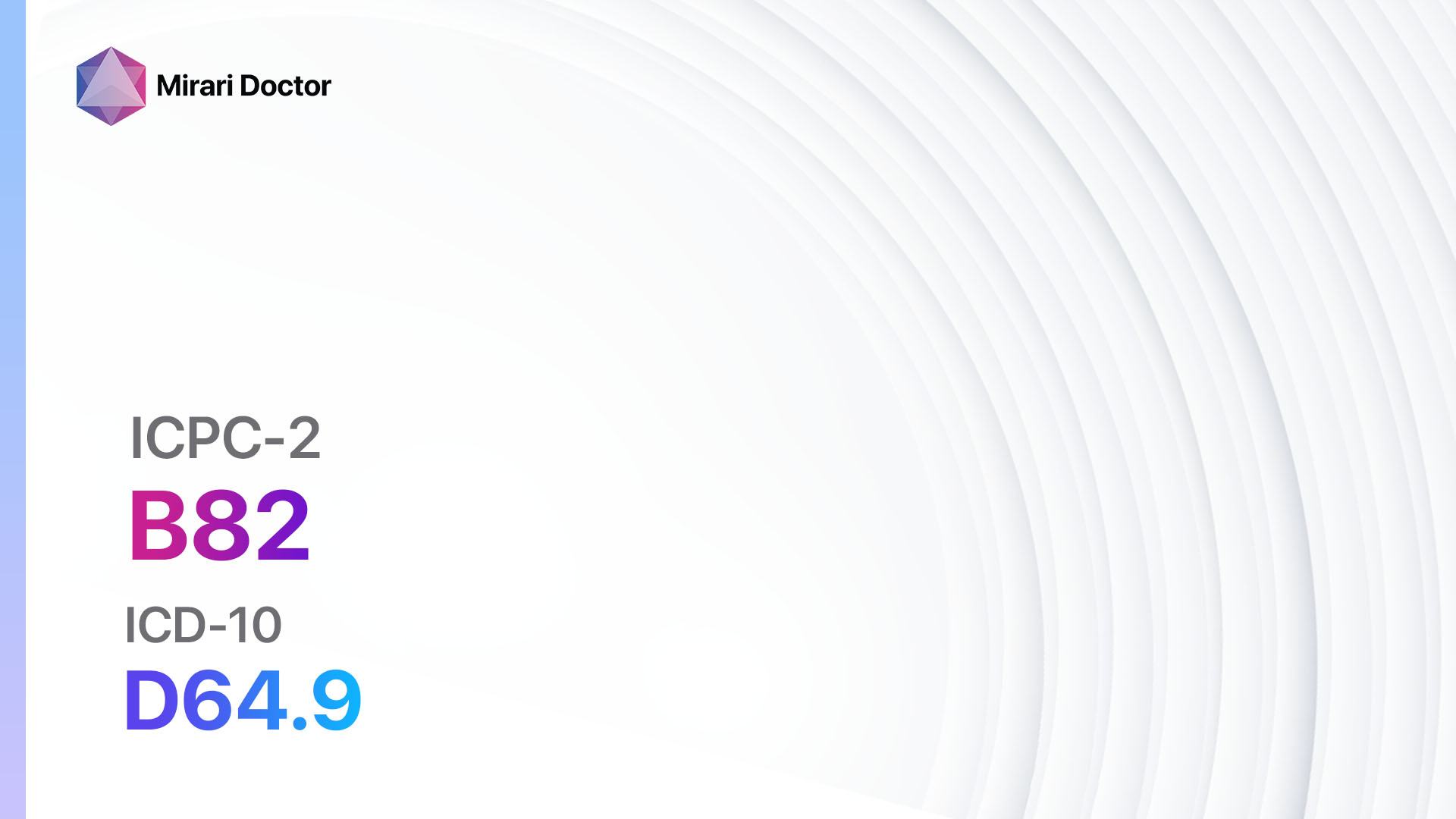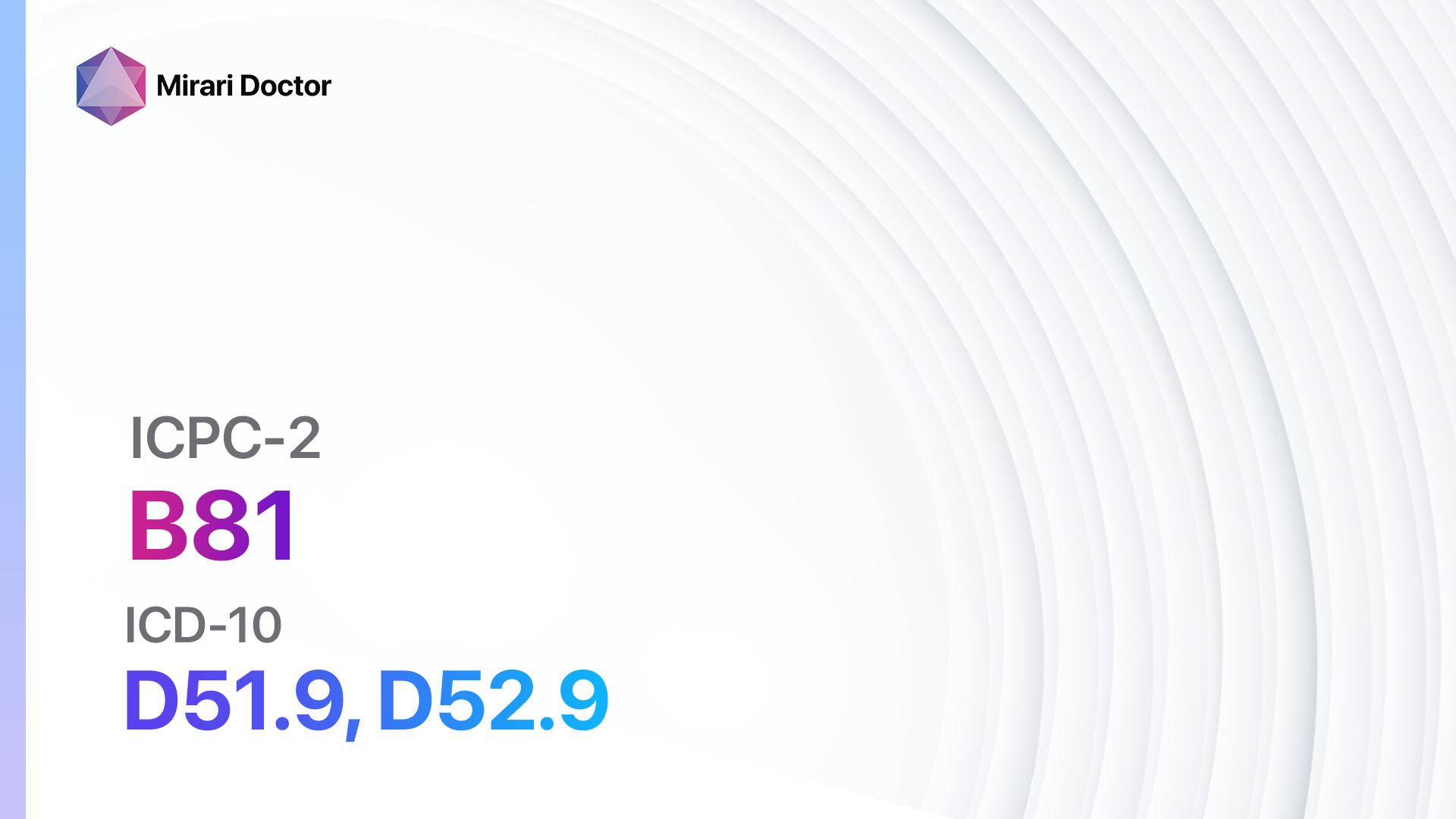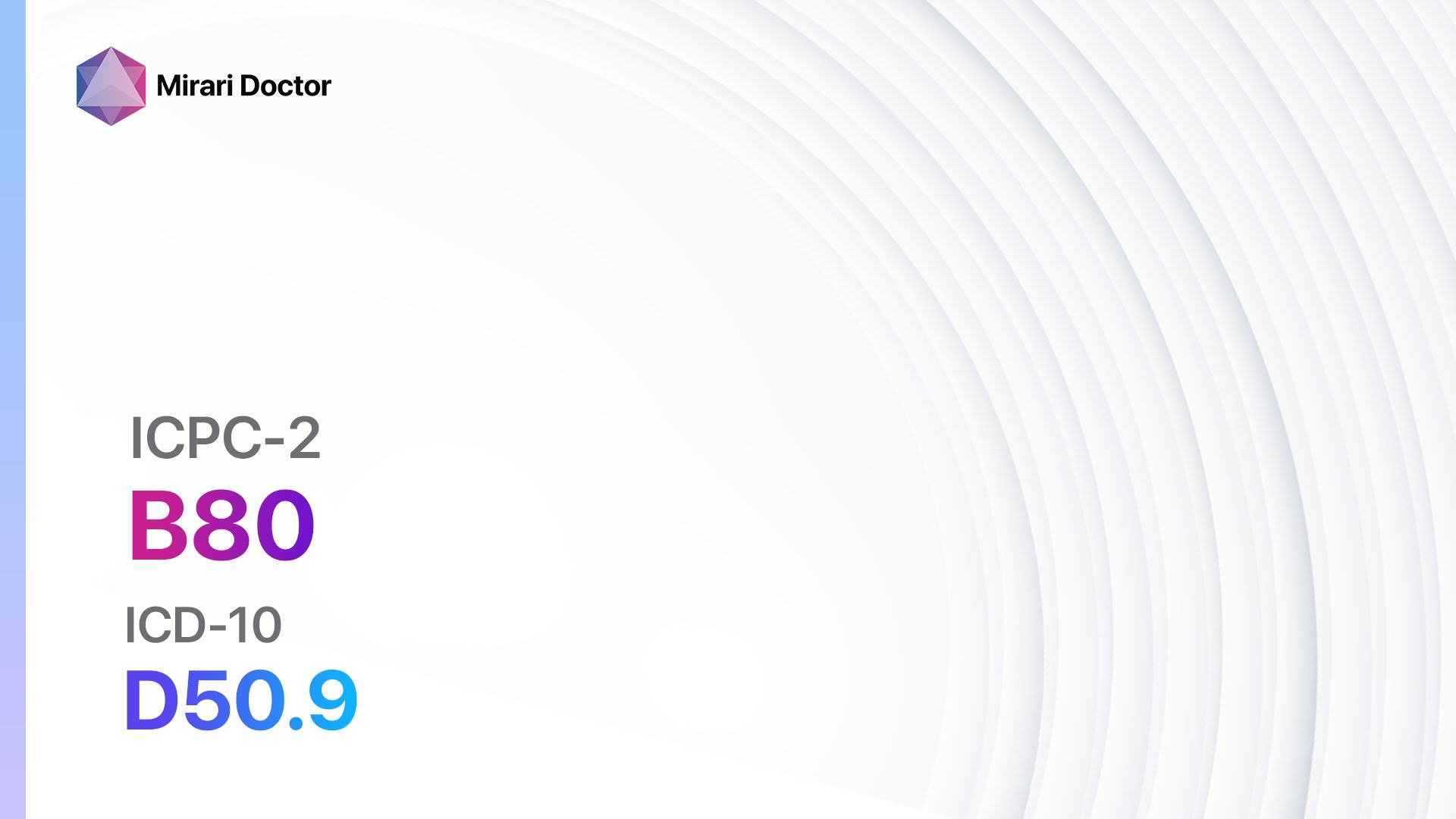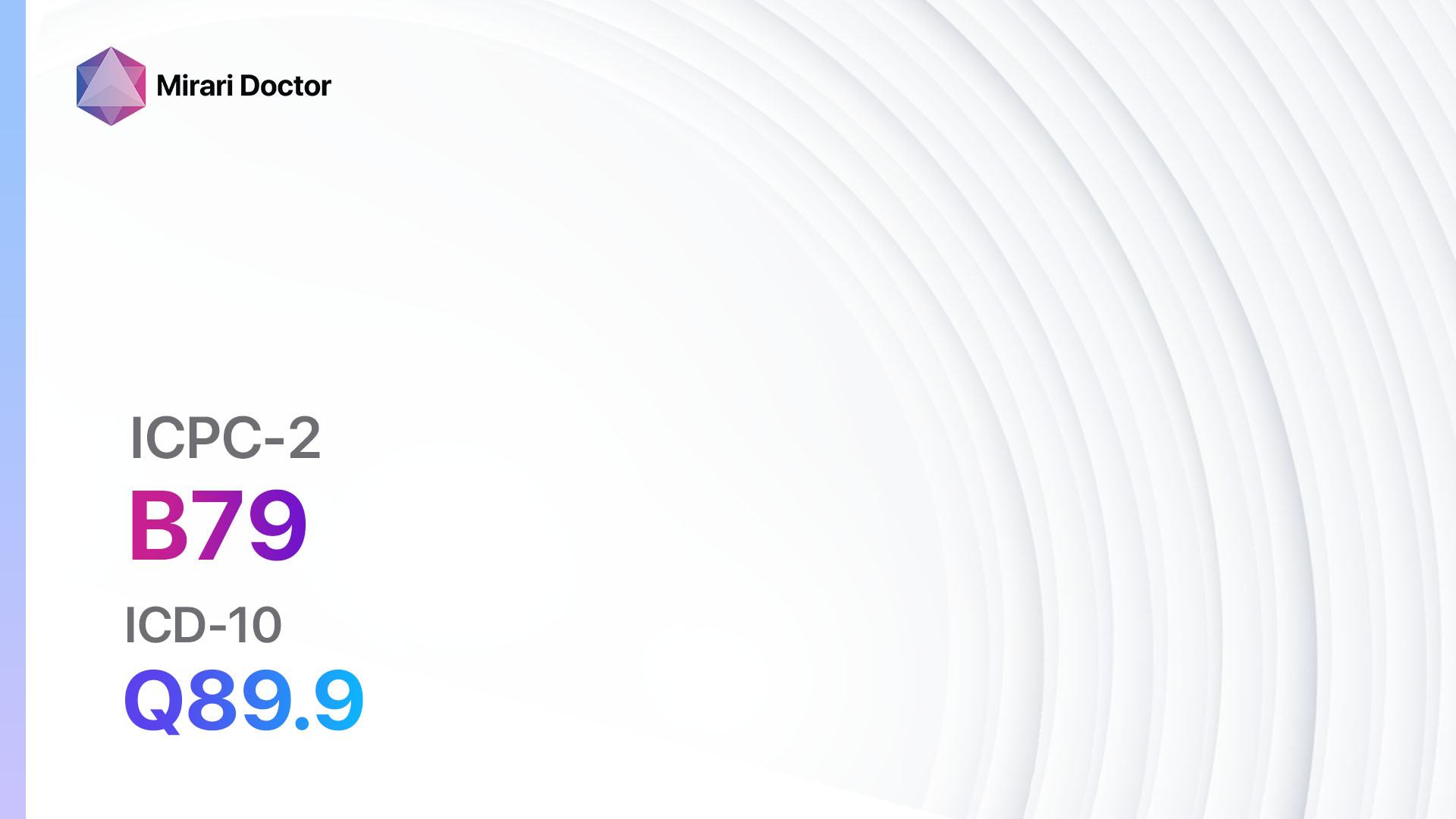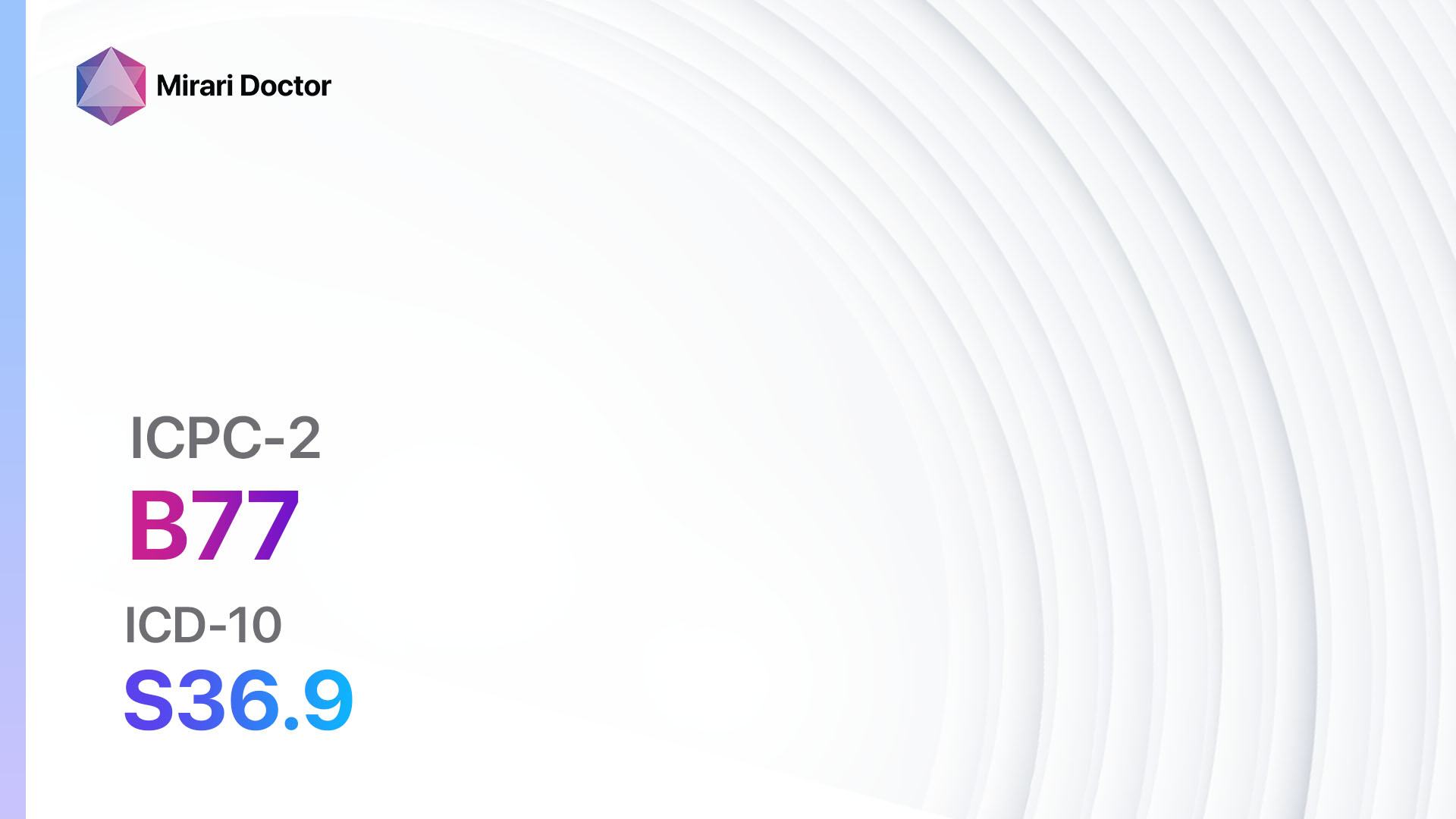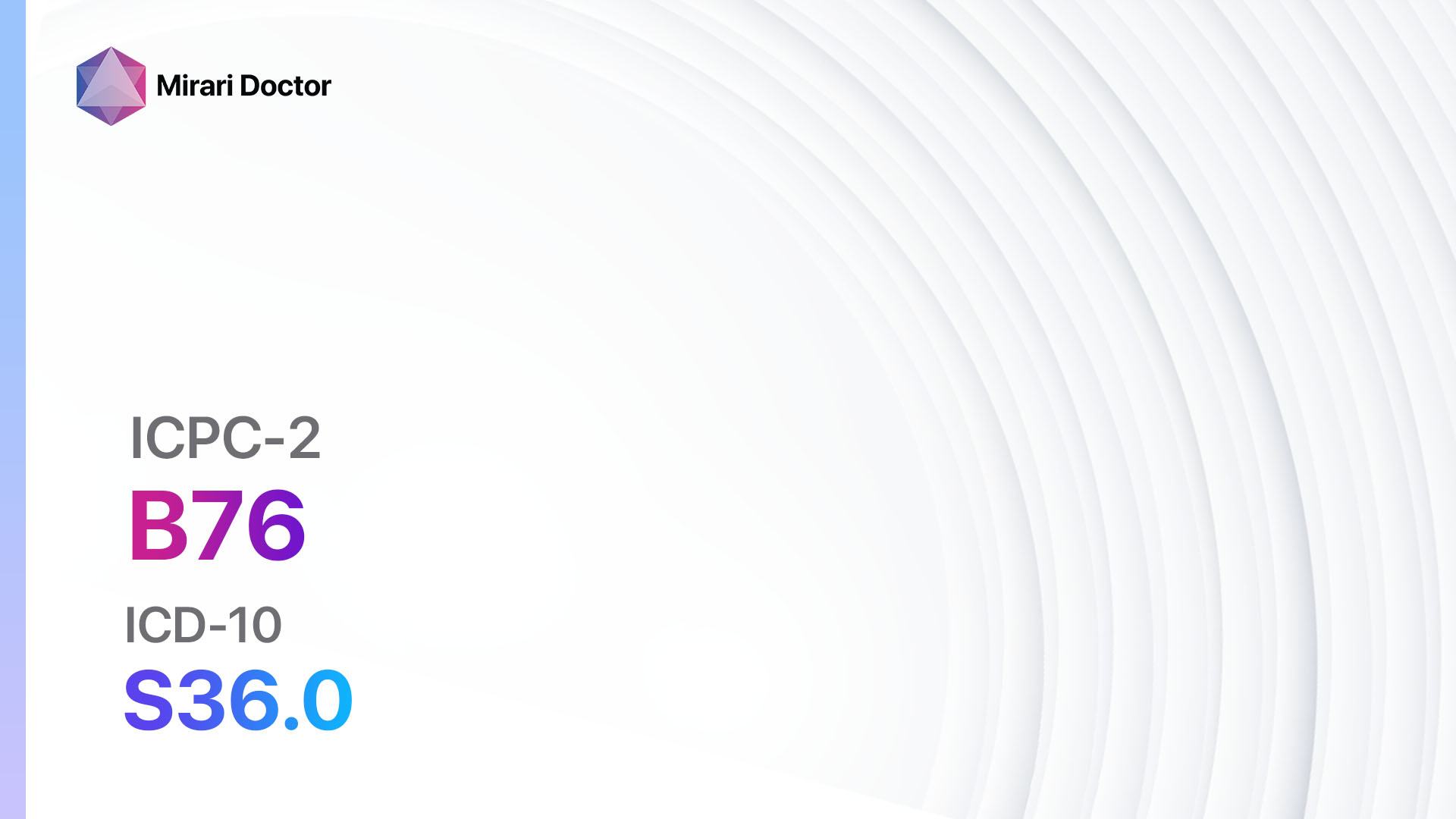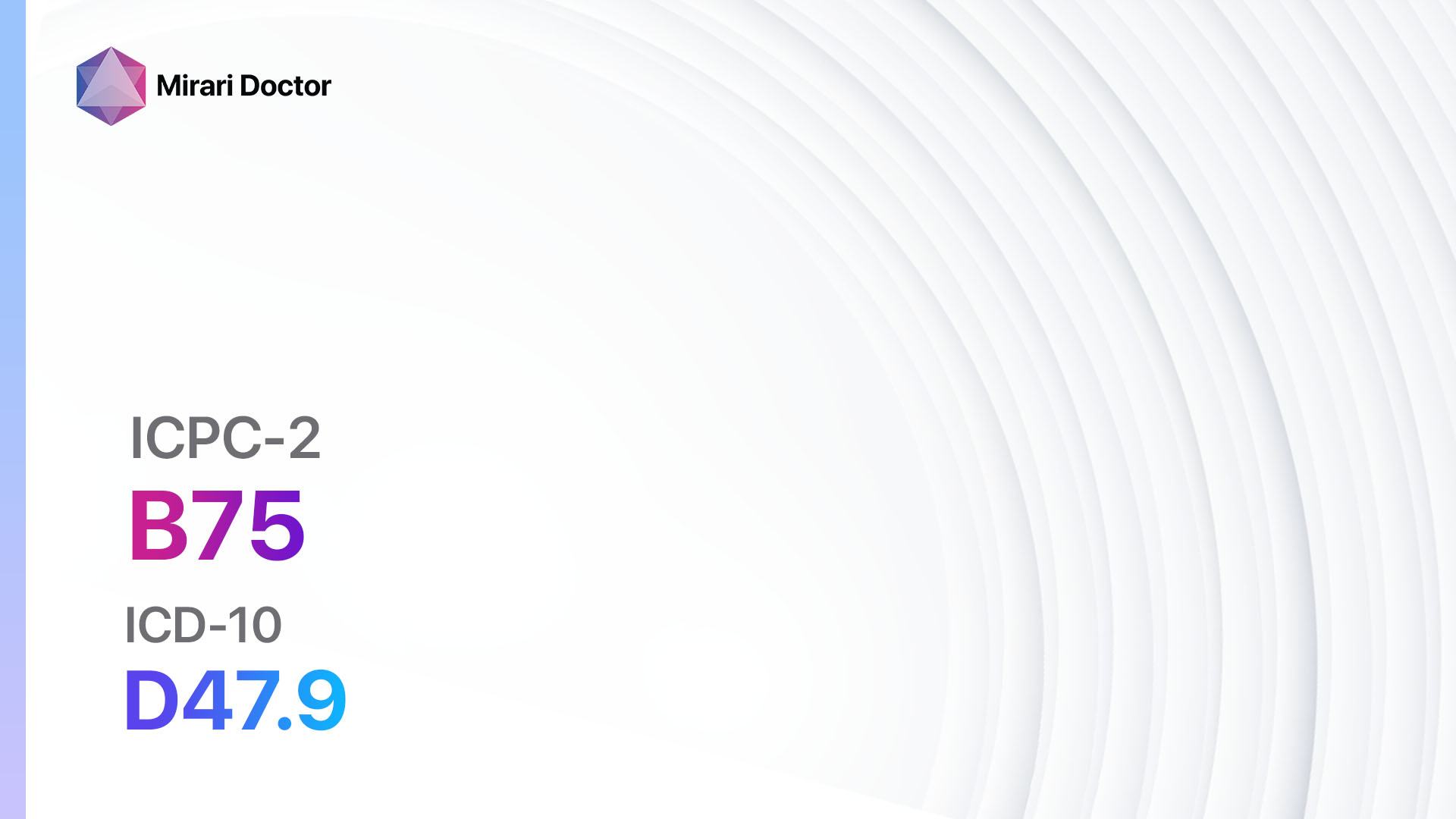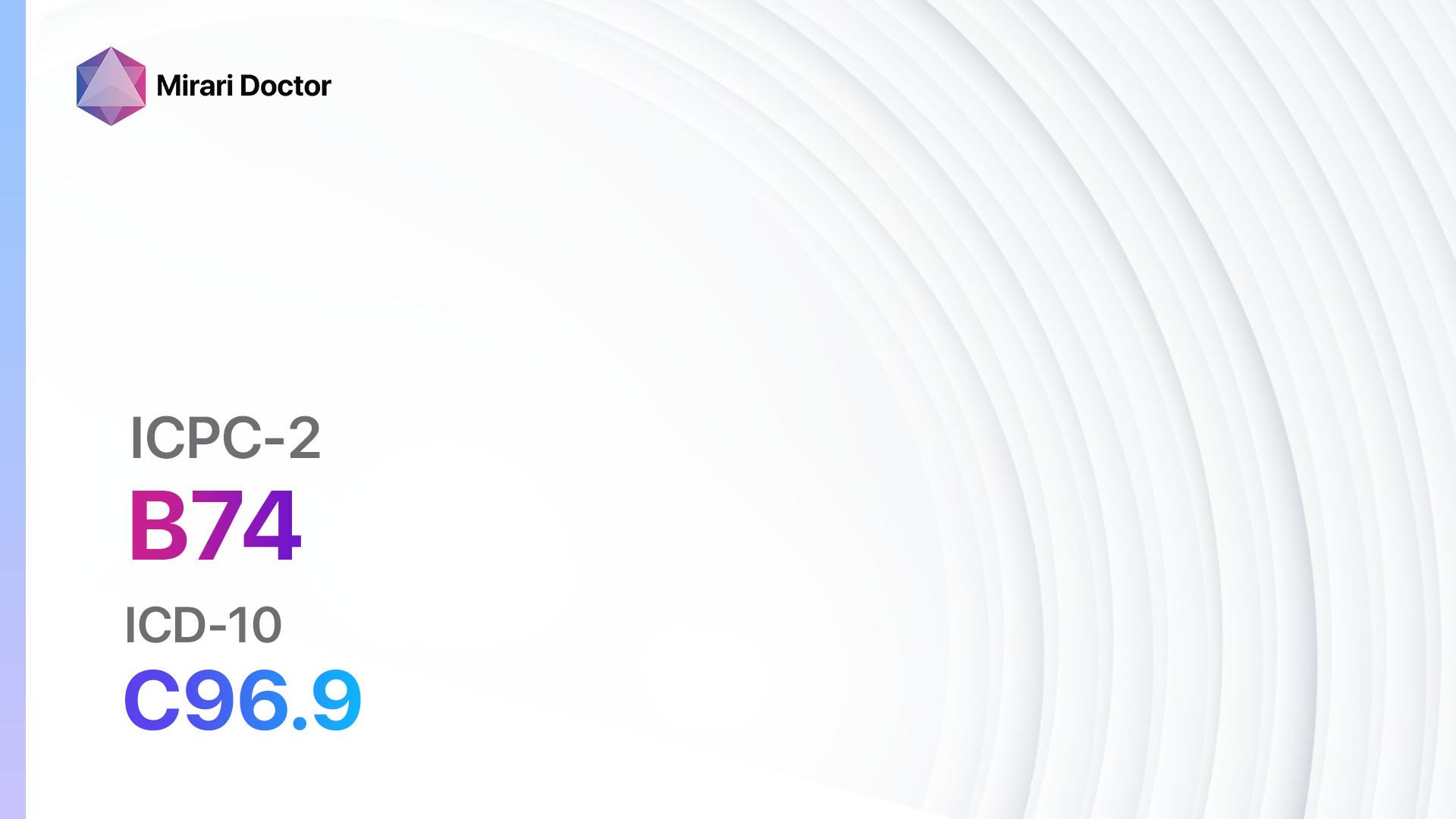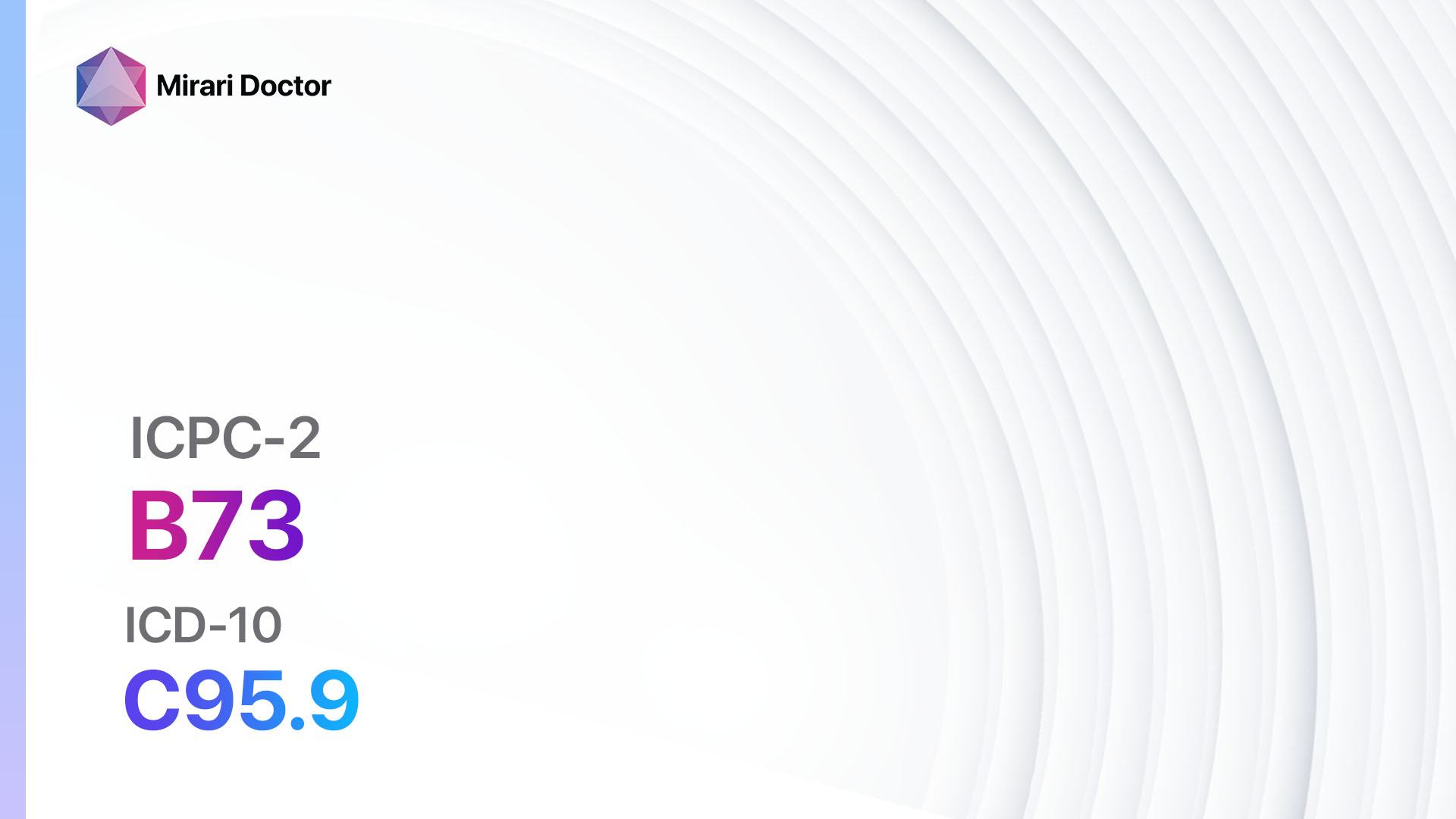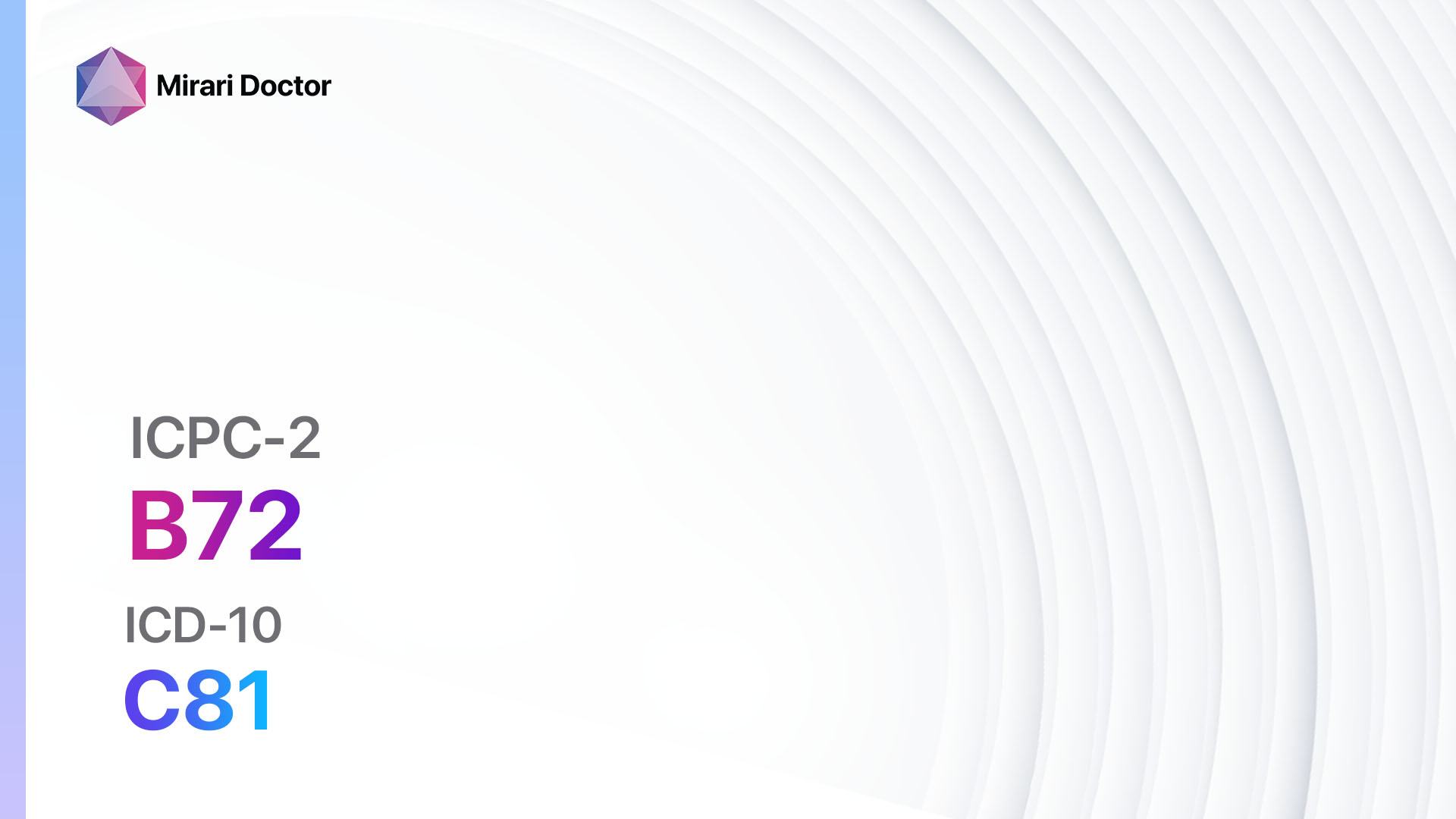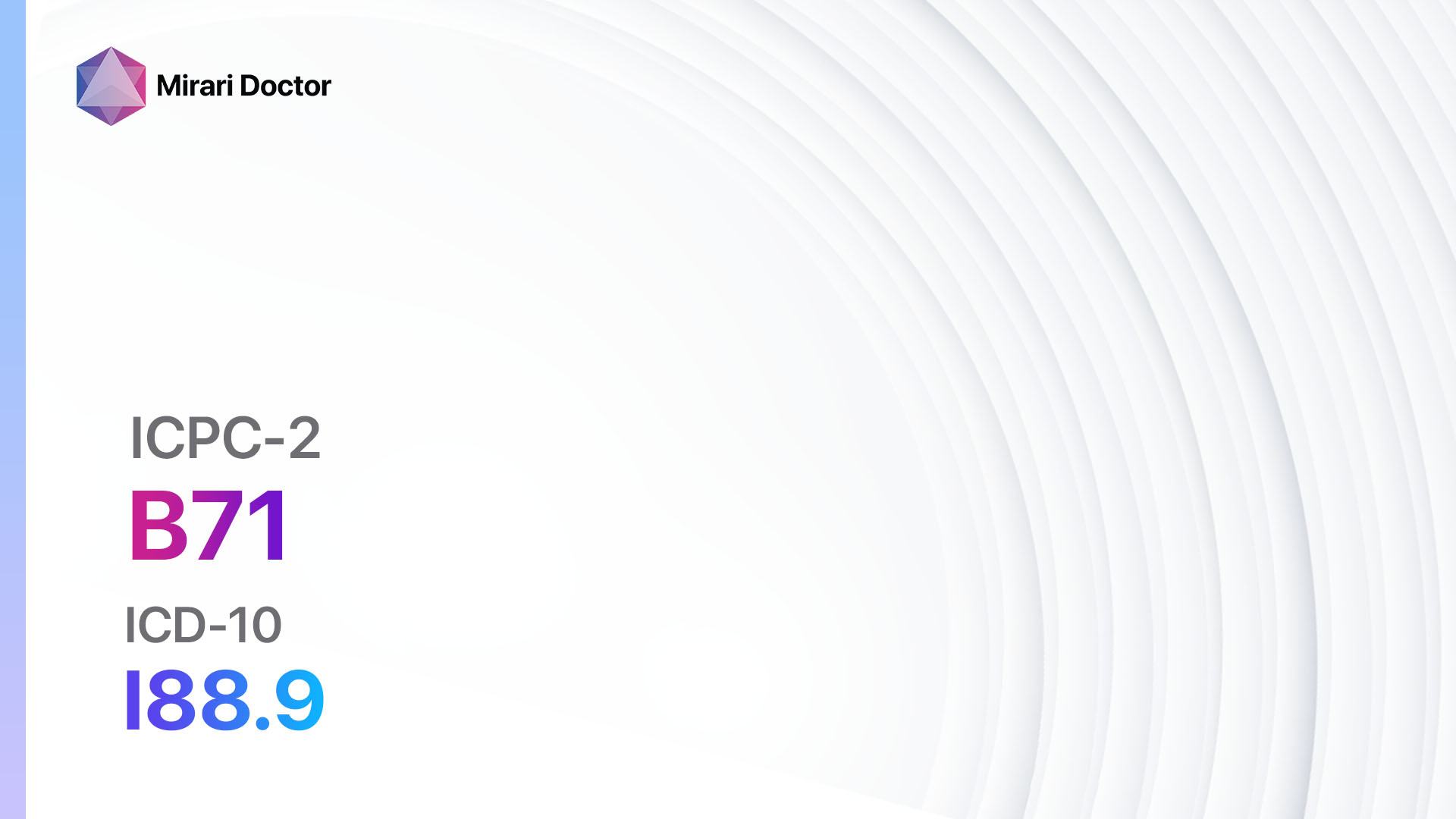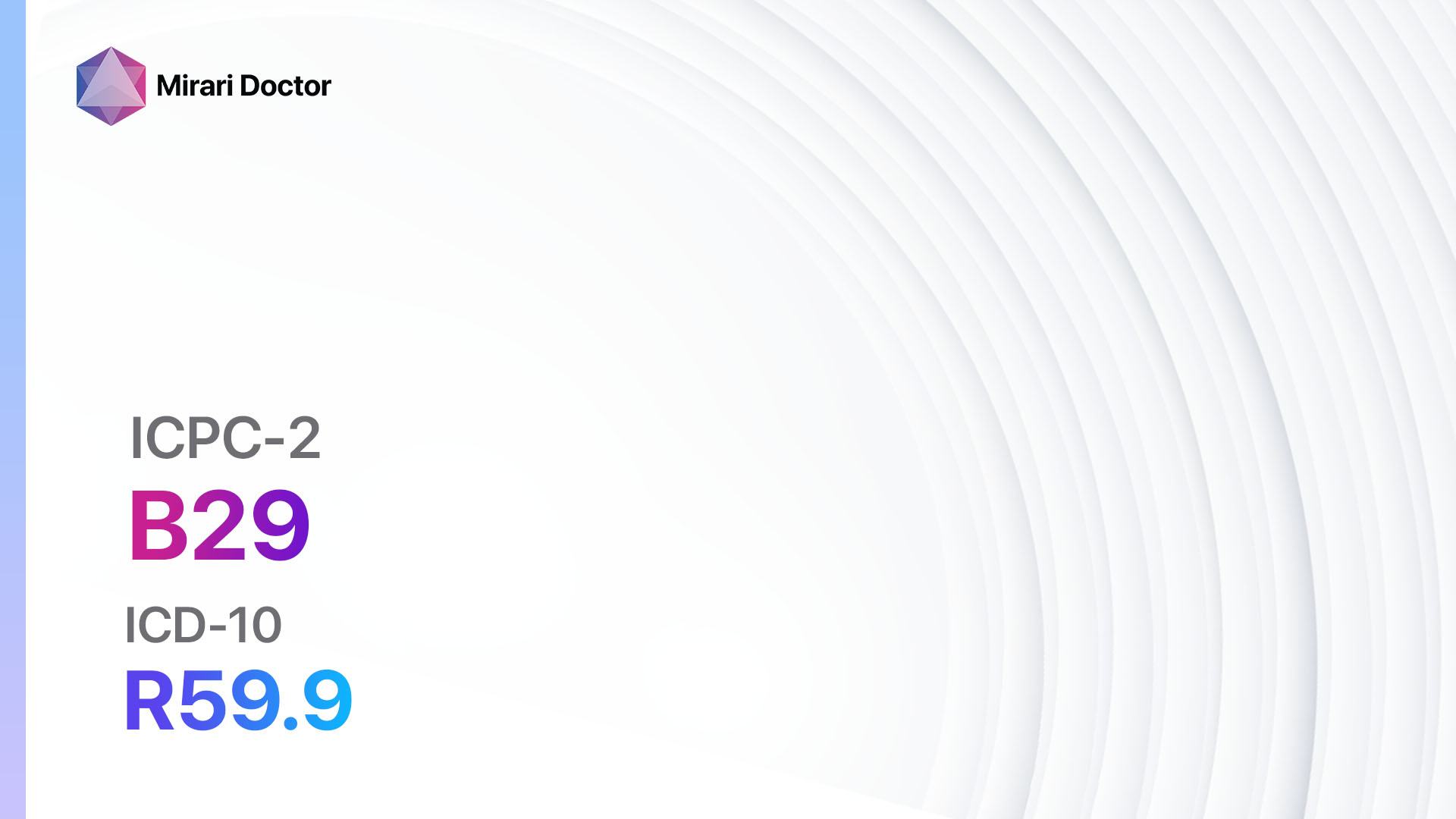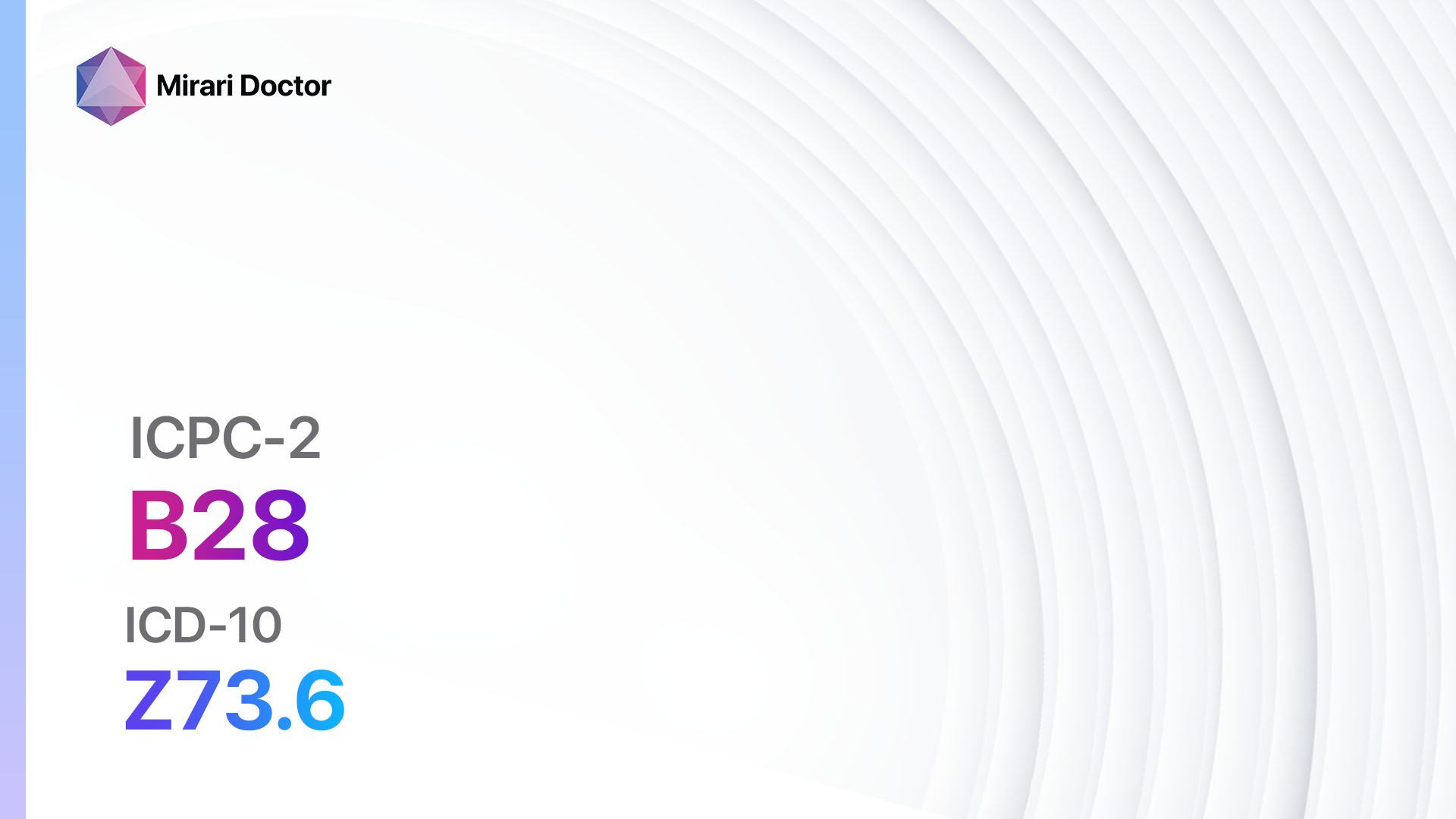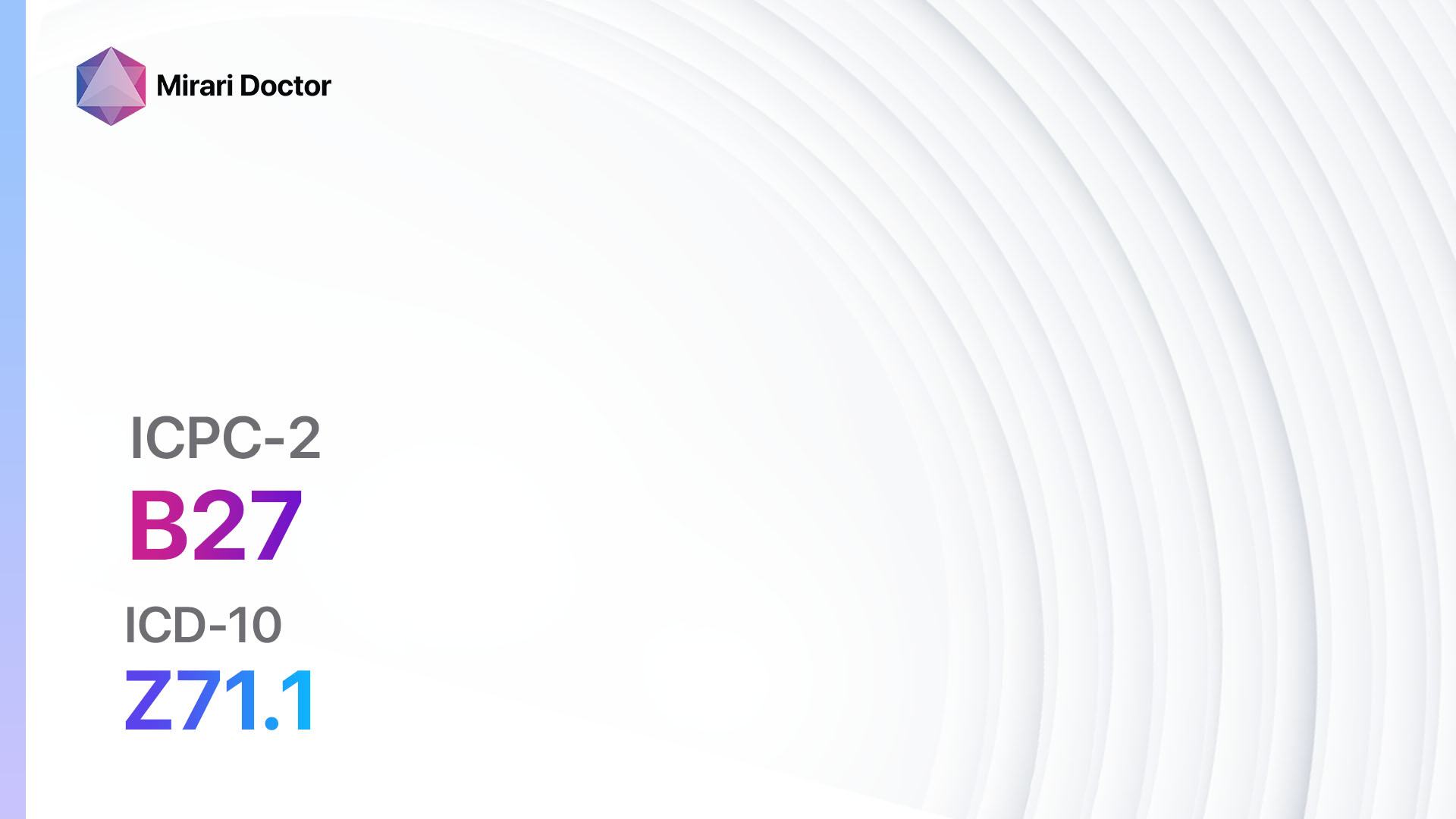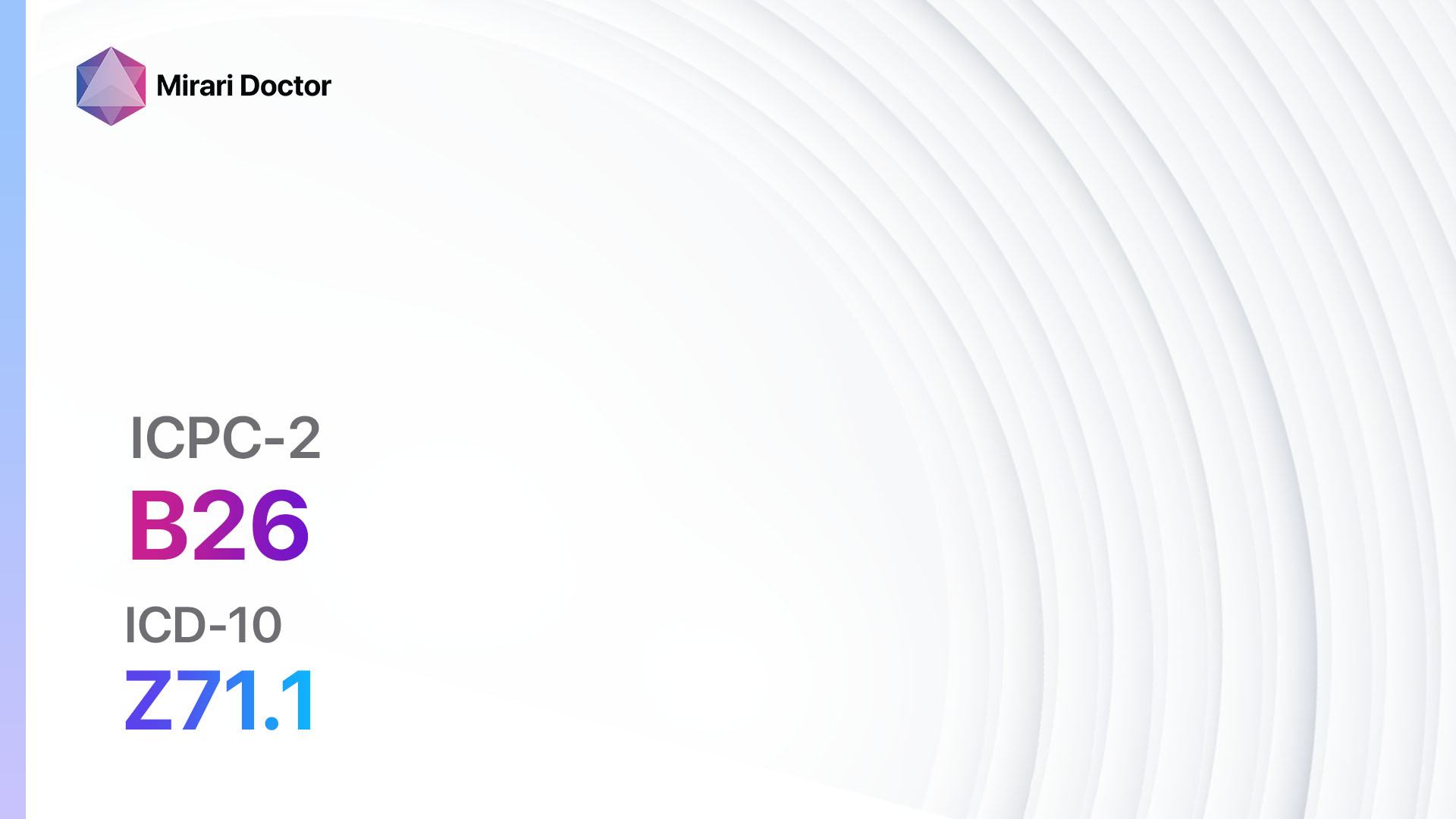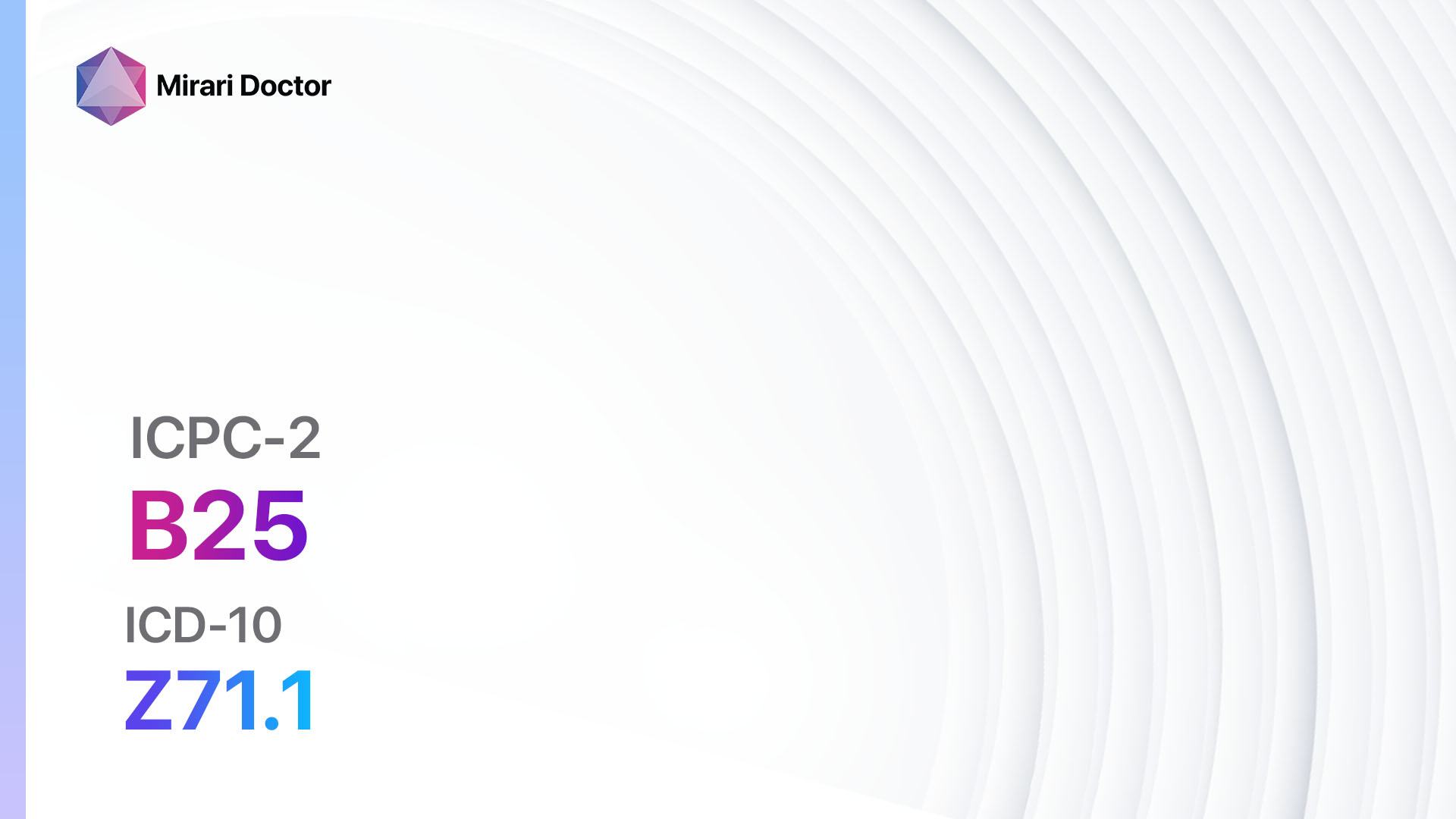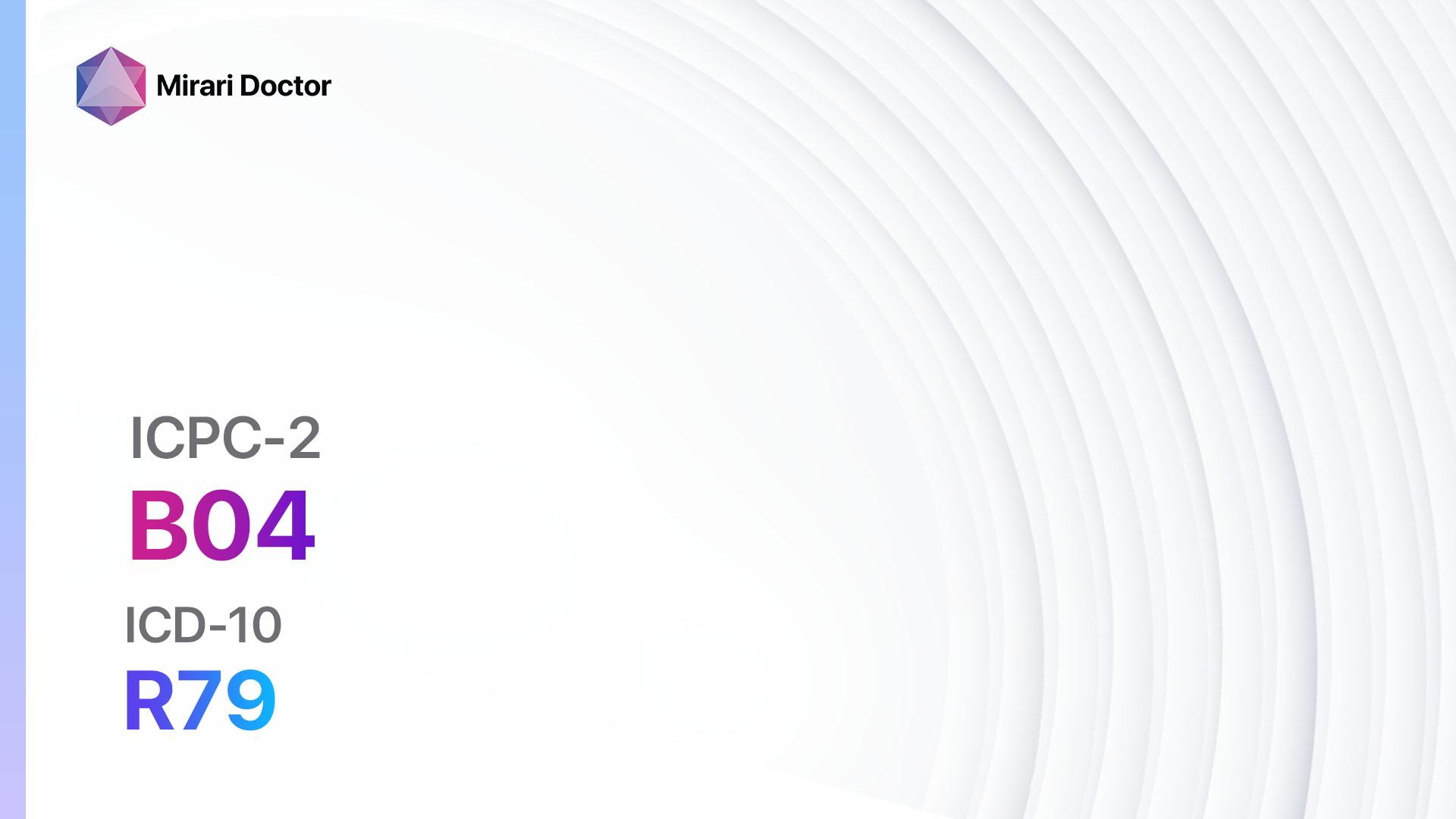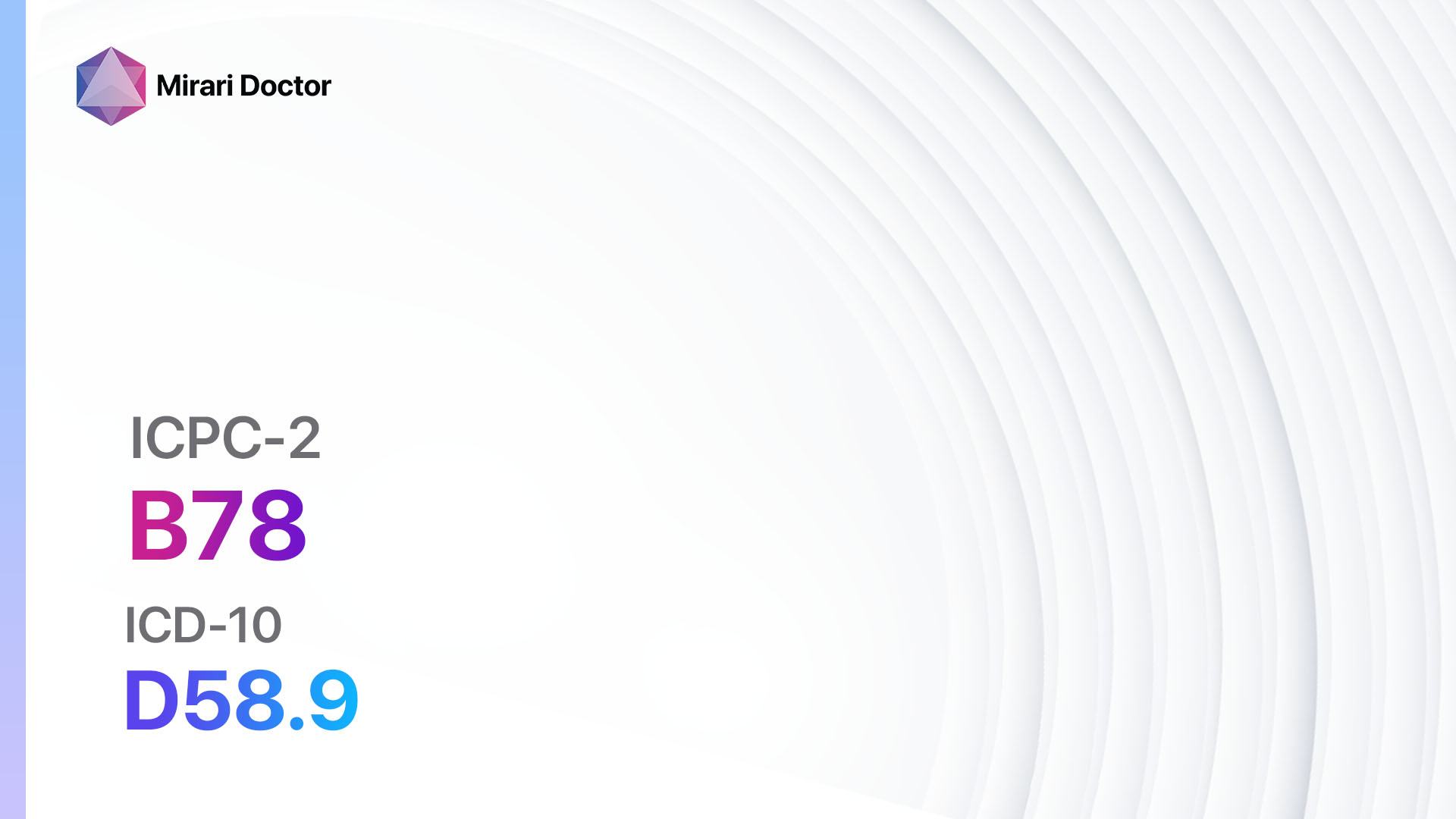
Introduction
Hereditary haemolytic anemia is a group of inherited disorders characterized by the premature destruction of red blood cells[1]. This condition can lead to a variety of symptoms and complications, and it is important to diagnose and manage it effectively[2]. The aim of this guide is to provide healthcare professionals with a comprehensive overview of the diagnostic steps and possible interventions for hereditary haemolytic anemia.
Codes
- ICPC-2 Code: B78 Hereditary haemolytic anemia[3]
- ICD-10 Code: D58.9 Hereditary haemolytic anaemia, unspecified[4]
Symptoms
- Fatigue: Patients may experience excessive tiredness and lack of energy[5].
- Pale skin: Anemia can cause a pale or yellowish appearance of the skin[6].
- Shortness of breath: Reduced oxygen-carrying capacity of the blood can lead to difficulty in breathing[7].
- Rapid heartbeat: The heart may need to work harder to compensate for the decreased oxygen supply[8].
- Enlarged spleen: In some cases, the spleen may become enlarged due to increased red blood cell destruction[9].
Causes
- Genetic mutations: Hereditary haemolytic anemia is caused by mutations in genes that are involved in the production and maintenance of red blood cells[10].
- Enzyme deficiencies: Some forms of hereditary haemolytic anemia result from deficiencies in enzymes that are necessary for red blood cell function.
- Abnormal hemoglobin: Mutations in the genes that code for hemoglobin can lead to the production of abnormal hemoglobin molecules, causing red blood cells to be more prone to destruction.
Diagnostic Steps
Medical History
- Gather information about the patient’s symptoms, including fatigue, shortness of breath, and pale skin.
- Ask about any family history of anemia or other blood disorders.
- Inquire about any previous diagnoses or treatments for anemia.
Physical Examination
- Perform a thorough physical examination, paying attention to signs such as pale skin, rapid heartbeat, and an enlarged spleen.
- Check for any other physical abnormalities that may be associated with specific types of hereditary haemolytic anemia.
Laboratory Tests
- Complete blood count (CBC): Measure the levels of red blood cells, white blood cells, and platelets in the blood. Look for signs of anemia, such as low hemoglobin and hematocrit levels.
- Reticulocyte count: Assess the production of new red blood cells by measuring the percentage of reticulocytes in the blood.
- Peripheral blood smear: Examine a sample of the patient’s blood under a microscope to look for any abnormalities in the shape, size, or color of red blood cells.
- Hemoglobin electrophoresis: Determine the types and amounts of hemoglobin present in the patient’s blood.
- Enzyme assays: Measure the activity levels of specific enzymes involved in red blood cell function to identify enzyme deficiencies.
Diagnostic Imaging
- Abdominal ultrasound: Evaluate the size and condition of the spleen, which may be enlarged in some cases of hereditary haemolytic anemia.
- Bone marrow biopsy: Collect a sample of bone marrow to examine the production and maturation of blood cells.
Other Tests
- Genetic testing: Identify specific genetic mutations associated with hereditary haemolytic anemia.
- Coombs test: Determine if the patient’s red blood cells are being destroyed by the immune system.
Follow-up and Patient Education
- Schedule regular follow-up appointments to monitor the patient’s condition and adjust treatment as necessary.
- Educate the patient about the nature of hereditary haemolytic anemia, including its causes, symptoms, and potential complications.
- Provide information on lifestyle modifications and interventions that can help manage the condition effectively.
Possible Interventions
Traditional Interventions
Medications:
Top 5 drugs for Hereditary haemolytic anemia:
- Corticosteroids (e.g., Prednisone, Dexamethasone):
- Cost: Generic versions can be $5-$50/month.
- Contraindications: Active infections, uncontrolled diabetes.
- Side effects: Increased appetite, weight gain, mood changes.
- Severe side effects: Osteoporosis, adrenal suppression.
- Drug interactions: Nonsteroidal anti-inflammatory drugs (NSAIDs), anticoagulants.
- Warning: Long-term use requires careful monitoring.
- Immunosuppressants (e.g., Azathioprine, Cyclosporine):
- Cost: Generic versions can be $10-$100/month.
- Contraindications: Active infections, liver or kidney disease.
- Side effects: Increased risk of infections, gastrointestinal upset.
- Severe side effects: Bone marrow suppression, increased risk of cancer.
- Drug interactions: Allopurinol, ACE inhibitors.
- Warning: Regular blood tests required to monitor for side effects.
- Iron supplements (e.g., Ferrous sulfate, Ferrous gluconate):
- Cost: Generic versions can be $5-$20/month.
- Contraindications: Hemochromatosis, iron overload.
- Side effects: Upset stomach, constipation.
- Severe side effects: Iron toxicity, gastrointestinal bleeding.
- Drug interactions: Antacids, tetracycline antibiotics.
- Warning: Regular monitoring of iron levels required.
- Folic acid:
- Cost: Generic versions can be $5-$10/month.
- Contraindications: None.
- Side effects: None.
- Severe side effects: None.
- Drug interactions: Methotrexate, sulfasalazine.
- Warning: None.
- Erythropoiesis-stimulating agents (e.g., Epoetin alfa, Darbepoetin alfa):
- Cost: $100-$500/month.
- Contraindications: Uncontrolled hypertension, pure red cell aplasia.
- Side effects: Hypertension, headache, flu-like symptoms.
- Severe side effects: Increased risk of blood clots, pure red cell aplasia.
- Drug interactions: ACE inhibitors, angiotensin receptor blockers.
- Warning: Regular monitoring of blood pressure and hemoglobin levels required.
Alternative Drugs:
- Hydroxyurea: Stimulates the production of fetal hemoglobin, which can help reduce red blood cell destruction.
- Danazol: Increases red blood cell production and reduces the destruction of red blood cells.
- Splenectomy: Surgical removal of the spleen may be considered in severe cases of hereditary haemolytic anemia.
Surgical Procedures:
- Bone marrow transplant: In cases of severe hereditary haemolytic anemia, a bone marrow transplant may be considered to replace the patient’s faulty bone marrow with healthy donor cells. Cost: $300,000 to $800,000.
Alternative Interventions
- Acupuncture: May help alleviate symptoms such as fatigue and pain. Cost: $60-$120 per session.
- Herbal supplements: Some herbal supplements, such as turmeric and ginger, may have anti-inflammatory and antioxidant properties that can support overall health. Cost: Varies depending on the specific supplement.
- Meditation: Can help reduce stress and promote relaxation, which may improve symptoms of hereditary haemolytic anemia. Cost: Varies depending on the specific practice.
Lifestyle Interventions
- Dietary modifications: A diet rich in iron, folic acid, and vitamin B12 can help support red blood cell production. Cost: Varies depending on individual dietary choices.
- Regular exercise: Physical activity can improve cardiovascular health and increase oxygen delivery to tissues. Cost: Varies depending on individual preferences and access to exercise facilities.
- Stress management: Techniques such as deep breathing, meditation, or yoga can help reduce stress and support overall well-being. Cost: Varies depending on the specific practice.
It is important to note that the cost ranges provided are approximate and may vary depending on the location and availability of the interventions.
Mirari Cold Plasma Alternative Intervention
Understanding Mirari Cold Plasma
- Safe and Non-Invasive Treatment: Mirari Cold Plasma is a safe and non-invasive treatment option for various skin conditions. It does not require incisions, minimizing the risk of scarring, bleeding, or tissue damage.
- Efficient Extraction of Foreign Bodies: Mirari Cold Plasma facilitates the removal of foreign bodies from the skin by degrading and dissociating organic matter, allowing easier access and extraction.
- Pain Reduction and Comfort: Mirari Cold Plasma has a local analgesic effect, providing pain relief during the treatment, making it more comfortable for the patient.
- Reduced Risk of Infection: Mirari Cold Plasma has antimicrobial properties, effectively killing bacteria and reducing the risk of infection.
- Accelerated Healing and Minimal Scarring: Mirari Cold Plasma stimulates wound healing and tissue regeneration, reducing healing time and minimizing the formation of scars.
Mirari Cold Plasma Prescription
Video instructions for using Mirari Cold Plasma Device – B78 Hereditary haemolytic anemia (ICD-10:D58.9)
| Mild | Moderate | Severe |
| Mode setting: 7 (Immunotherapy) Location: 1 (Sacrum) Morning: 15 minutes, Evening: 15 minutes |
Mode setting: 7 (Immunotherapy) Location: 1 (Sacrum) Morning: 30 minutes, Lunch: 30 minutes, Evening: 30 minutes |
Mode setting: 7 (Immunotherapy) Location: 1 (Sacrum) Morning: 30 minutes, Lunch: 30 minutes, Evening: 30 minutes |
| Mode setting: 7 (Immunotherapy) Location: 4 (Heart, Bile & Pancreas) Morning: 15 minutes, Evening: 15 minutes |
Mode setting: 7 (Immunotherapy) Location: 4 (Heart, Bile & Pancreas) Morning: 30 minutes, Lunch: 30 minutes, Evening: 30 minutes |
Mode setting: 7 (Immunotherapy) Location: 4 (Heart, Bile & Pancreas) Morning: 30 minutes, Lunch: 30 minutes, Evening: 30 minutes |
| Mode setting: 7 (Immunotherapy) Location: 1 (Sacrum) Morning: 15 minutes, Evening: 15 minutes |
Mode setting: 7 (Immunotherapy) Location: 1 (Sacrum) Morning: 30 minutes, Lunch: 30 minutes, Evening: 30 minutes |
Mode setting: 7 (Immunotherapy) Location: 1 (Sacrum) Morning: 30 minutes, Lunch: 30 minutes, Evening: 30 minutes |
| Total Morning: 45 minutes approx. $7.50 USD, Evening: 45 minutes approx. $7.50 USD |
Total Morning: 90 minutes approx. $15 USD, Lunch: 90 minutes approx. $15 USD, Evening: 90 minutes approx. $15 USD |
Total Morning: 90 minutes approx. $15 USD, Lunch: 90 minutes approx. $15 USD, Evening: 90 minutes approx. $15 USD |
| Usual treatment for 7-60 days approx. $105 USD – $900 USD | Usual treatment for 6-8 weeks approx. $1,890 USD – $2,520 USD |
Usual treatment for 3-6 months approx. $4,050 USD – $8,100 USD
|
 |
|
Use the Mirari Cold Plasma device to treat Hereditary haemolytic anemia effectively.
WARNING: MIRARI COLD PLASMA IS DESIGNED FOR THE HUMAN BODY WITHOUT ANY ARTIFICIAL OR THIRD PARTY PRODUCTS. USE OF OTHER PRODUCTS IN COMBINATION WITH MIRARI COLD PLASMA MAY CAUSE UNPREDICTABLE EFFECTS, HARM OR INJURY. PLEASE CONSULT A MEDICAL PROFESSIONAL BEFORE COMBINING ANY OTHER PRODUCTS WITH USE OF MIRARI.
Step 1: Cleanse the Skin
- Start by cleaning the affected area of the skin with a gentle cleanser or mild soap and water. Gently pat the area dry with a clean towel.
Step 2: Prepare the Mirari Cold Plasma device
- Ensure that the Mirari Cold Plasma device is fully charged or has fresh batteries as per the manufacturer’s instructions. Make sure the device is clean and in good working condition.
- Switch on the Mirari device using the power button or by following the specific instructions provided with the device.
- Some Mirari devices may have adjustable settings for intensity or treatment duration. Follow the manufacturer’s instructions to select the appropriate settings based on your needs and the recommended guidelines.
Step 3: Apply the Device
- Place the Mirari device in direct contact with the affected area of the skin. Gently glide or hold the device over the skin surface, ensuring even coverage of the area experiencing.
- Slowly move the Mirari device in a circular motion or follow a specific pattern as indicated in the user manual. This helps ensure thorough treatment coverage.
Step 4: Monitor and Assess:
- Keep track of your progress and evaluate the effectiveness of the Mirari device in managing your Hereditary haemolytic anemia. If you have any concerns or notice any adverse reactions, consult with your health care professional.
Note
This guide is for informational purposes only and should not replace the advice of a medical professional. Always consult with your healthcare provider or a qualified medical professional for personal advice, diagnosis, or treatment. Do not solely rely on the information presented here for decisions about your health. Use of this information is at your own risk. The authors of this guide, nor any associated entities or platforms, are not responsible for any potential adverse effects or outcomes based on the content.
Mirari Cold Plasma System Disclaimer
- Purpose: The Mirari Cold Plasma System is a Class 2 medical device designed for use by trained healthcare professionals. It is registered for use in Thailand and Vietnam. It is not intended for use outside of these locations.
- Informational Use: The content and information provided with the device are for educational and informational purposes only. They are not a substitute for professional medical advice or care.
- Variable Outcomes: While the device is approved for specific uses, individual outcomes can differ. We do not assert or guarantee specific medical outcomes.
- Consultation: Prior to utilizing the device or making decisions based on its content, it is essential to consult with a Certified Mirari Tele-Therapist and your medical healthcare provider regarding specific protocols.
- Liability: By using this device, users are acknowledging and accepting all potential risks. Neither the manufacturer nor the distributor will be held accountable for any adverse reactions, injuries, or damages stemming from its use.
- Geographical Availability: This device has received approval for designated purposes by the Thai and Vietnam FDA. As of now, outside of Thailand and Vietnam, the Mirari Cold Plasma System is not available for purchase or use.
References
- Gallagher, P. G. (2013). Abnormalities of the erythrocyte membrane. Pediatric Clinics of North America, 60(6), 1349-1362.
- Perrotta, S., Gallagher, P. G., & Mohandas, N. (2008). Hereditary spherocytosis. The Lancet, 372(9647), 1411-1426.
- WONCA International Classification Committee. (1998). ICPC-2: International Classification of Primary Care. Oxford University Press, USA.
- World Health Organization. (2015). International statistical classification of diseases and related health problems (10th ed.).
- Barcellini, W., & Fattizzo, B. (2015). Clinical applications of hemolytic markers in the differential diagnosis and management of hemolytic anemia. Disease markers, 2015.
- Dhaliwal, G., Cornett, P. A., & Tierney Jr, L. M. (2004). Hemolytic anemia. American family physician, 69(11), 2599-2606.
- Brodsky, R. A. (2015). Paroxysmal nocturnal hemoglobinuria. Blood, The Journal of the American Society of Hematology, 126(22), 2558-2560.
- Schick, P. (2020). Hemolytic anemia: Evaluation and differential diagnosis. American family physician, 98(6), 354-361.
- Luzzatto, L., & Arese, P. (2018). Favism and glucose-6-phosphate dehydrogenase deficiency. New England Journal of Medicine, 378(1), 60-71.
- Grace, R. F., Layton, D. M., & Barcellini, W. (2019). How we manage patients with pyruvate kinase deficiency. British journal of haematology, 184(5), 721-734.
Related articles
Made in USA


